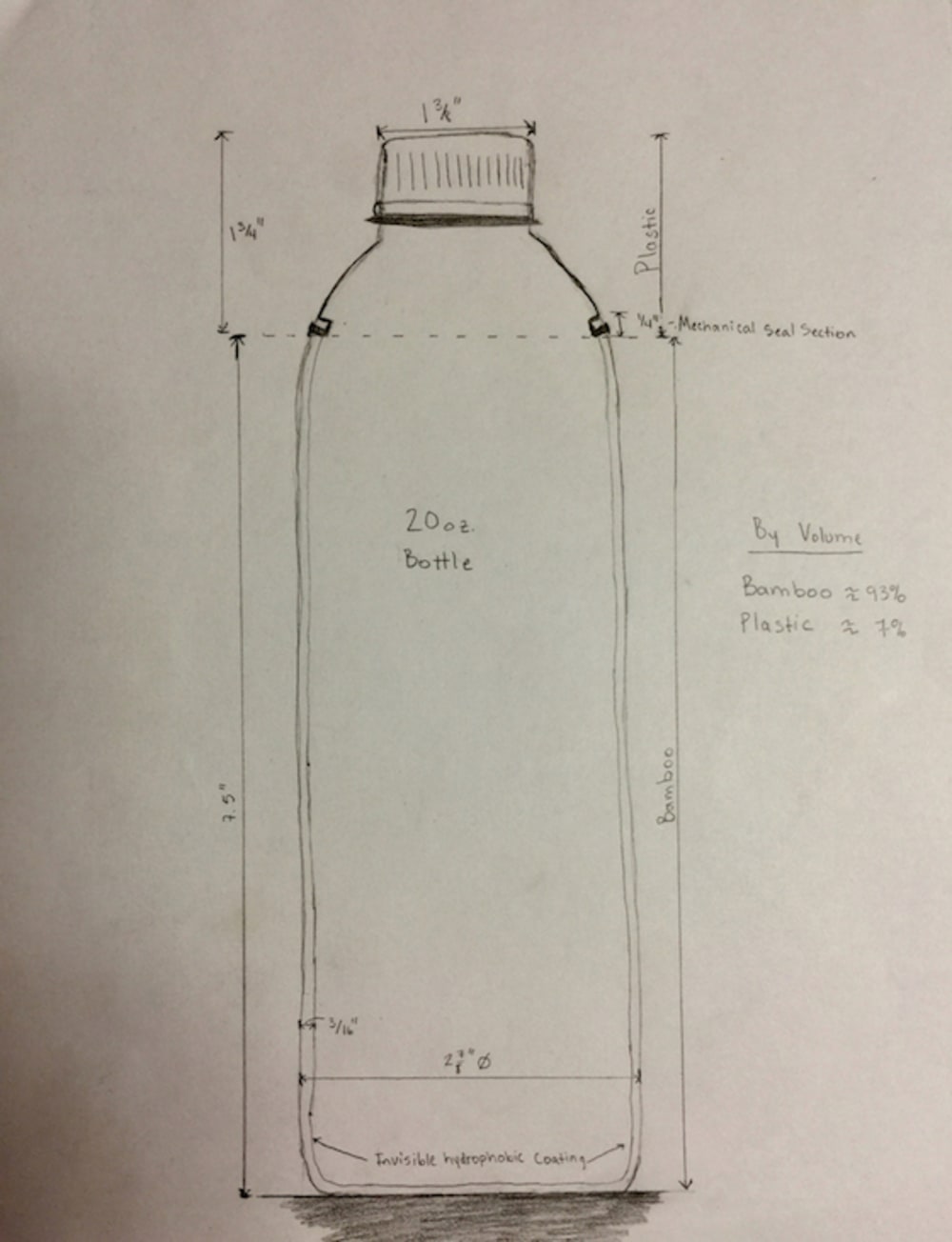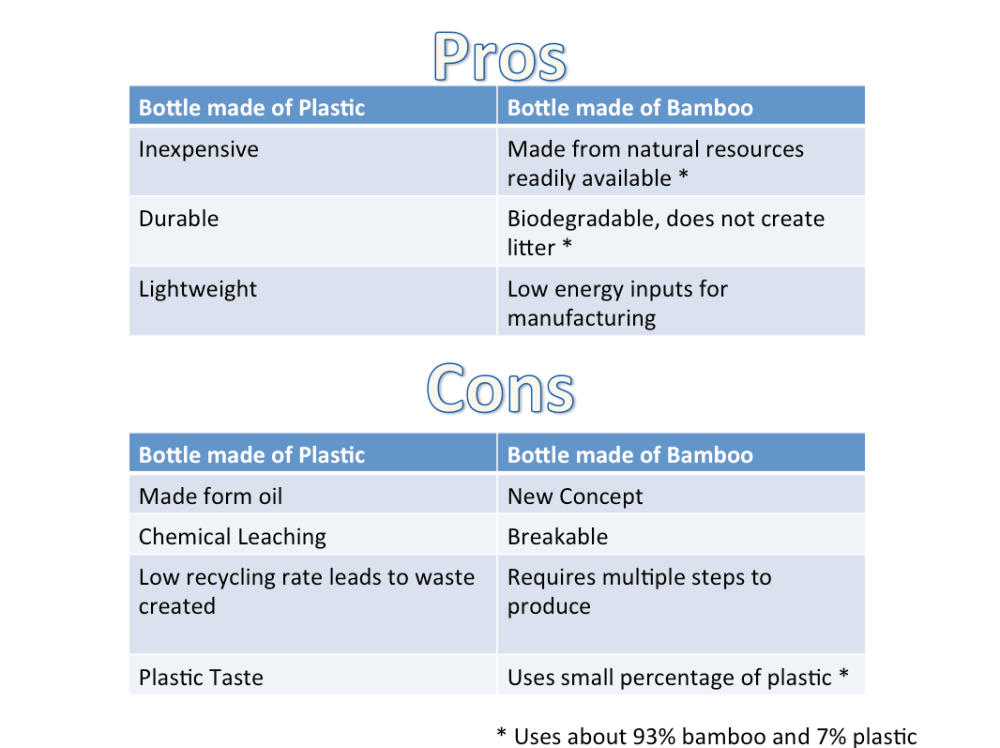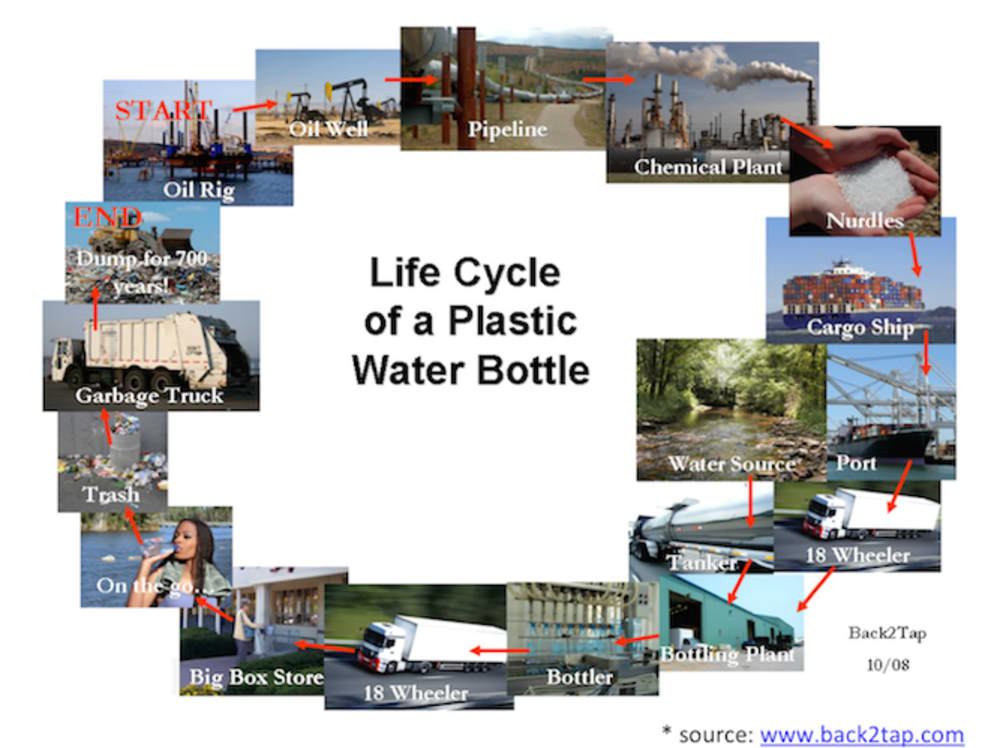Currently in these times there are many issues that are obvious but for whatever reason the consumers ignore them.
One of these issues that keeps growing on a daily basis it the problem with disposable bottles of water made of plastic. The facts and statistics tell a very dangerous tale. Two million tons of discarded water bottles end up in landfills, and many out on the open ocean as well. Only 1 out of 5 bottles is actually recycled by consumers. The disposable bottles take over 1000 years to biodegrade and the amount of oil used to make the plastic could power 1.3 million vehicles for one year. *
The truth is that it’s up to the producers of bottled water to do something about the issue because us consumers will keep overlooking the problem. The current project aims at being able to reduce dramatically the amount of plastic that is discarded simply by replacing plastic. The ideal candidate to replace plastic and all its negative effects would be something that is very readily available and relatively inexpensive. Aluminum and reusable bottles are not doing enough to overcome one-time use bottles. The proposed solution is making one-time use bottles of water from bamboo therefore being able to eliminate up to 90% of the plastic used and discarded. * Bamboo degrades exponentially faster than plastic and is a renewable resource available in several parts of the US and the world. * Bamboo grows at an impressive rate with minimal required maintenance and it has ideal insulating properties and strength to weight ratio.
Refer to figures for a schematic of the product. A very simple manufacturing process involving a couple of steps can be used to attain the consumer product. Thick Bamboo is easily machined to a simple cylinder of minimum allowable thickness (about 3/16”) to allow the necessary physical properties. It can also be treated for the required characteristics for a disposable water bottle. * A 1 mm hydrophobic coating/liner can be applied in the inside to maintain the bamboo and water from actually coming in contact to maintain the water pure. The liner would maintain the bamboo sealed in the inside but would allow for bio-degradation to occur from the outside when disposed of. Finally only about 10% of the bottle would actually be plastic to allow for a traditional cap and its versatility. The bamboo and plastic can easily be set together mechanically with pressure and heat to create the ideal seal and fusion. The estimated cost would be slightly higher than traditional plastic bottles but it could be cheaper if bamboo were imported. *
At the end of the day the consumer decides what to buy, and if there isn’t an alternative to the current path we could make the problem bigger. Bottled water has immense popularity but the bottles themselves need a remake. The only sure way to combat the problem is to reduce the plastic used until there is a way to eliminate it completely.
Like this entry?
-
About the Entrant
- Name:Domingo Estrada
- Type of entry:individual
- Software used for this entry:Microsoft PowerPoint, Solidworks
- Patent status:none








